|
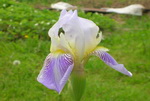 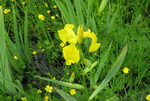 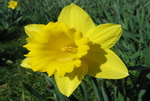
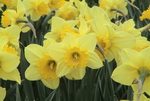 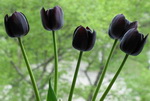 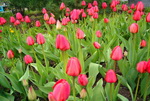
Tulip flowers can be single or double, and most, called "self-colored," grow in a huge range of solid colors, from pure white to many shades of yellow, red, brown, and purple. Some, called "broken tulips," have varicolored flowers caused by a harmless virus carried by aphids. The garden tulip, introduced into Western Europe from Turkey in the 1600's, is commercially cultivated most in the Netherlands and the United States, especially Michigan and Washington. Bellshaped lilies are usually solitary. They have three petals and three sepals, six stamens, and a triple ovary that ends in a three-lobed stigma. A tulip fruit holds numerous seeds, but many of the four thousand tulip cultivars can be propagated only via their scaly bulbs.
Iris flowers are more asymmetric than those of roses, lilies, or tulips. They possess six petallike floral segments: three inner, erect standards forming an arch atop the flower and three outermost, drooping, often multicolored falls. A set of three petallike stigmas also cover the stamens. Iris colors include white, yellow, bronze, mauve, purple, and red. Best-known are rhizomatious bearded (German) irises, which have multicolored falls. These cultivars arose from European species. They have stems up to 3 feet (1 meter) tall and yearly bear at least three flowers per plant. The twentieth century saw the development dwarf bearded irises and fragrant cultivars. The best known beardless, rhizomatous irises are Japanese and Siberian irises, which have clusters of blooms. English and Spanish irises grow from bulbs.
Daffodils, the best-known members of the genus Narcissus, are indigenous to northern Europe and have been widely cultivated there and in North America. Usually daffodil plants grow to heights of about 1.5 feet (about 0.5 meter). Each plant produces one large blossom on its centrally located stem. The blossom has a corolla split into six lobes and a centrally located trumpet, the corona. The corona is frilled at its edges, contains flower stamens, and leads to its pistil. The flowers were originally yellow, however, they have been hybridized into cultivars in which the trumpet and petals are often of contrasting yellows, whites, pinks, or oranges.
See also: Tulip, Daffodil, and Iris Growth
|
